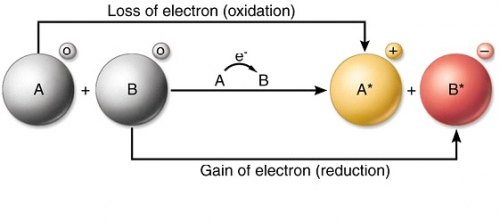Lightning Strikes: Nature’s Air Purifier?
By Elizabeth Hallissey, C2ST Intern, Loyola University
Many people see lightning as scary and threatening, but recent data may improve lightning’s reputation.
Lightning strikes produce nitric oxide, which leads to the formation of other oxidants, all of which have the potential to increase the atmosphere’s ability to cleanse itself. While researchers originally thought that the oxidant production effects of lightning strikes were not significant enough to bring about meaningful atmosphere cleansing power, a recent analysis of a 2012 study has revealed that the opposite may be true. As we contend with the worsening effects of pollution on our atmosphere and other parts of the environment, a reversal in thinking like this brings with it a newfound sense of optimism in the scientific community.

To understand what we’re talking about above, let’s take a step back and learn about the process that leads to lightning strikes and what happens after lightning appears.
Lightning is created when the water on the earth’s surface condenses and rises into the atmosphere, where it forms storm clouds and, eventually lightning. The process forms radicals like hydroxide (OH) and hydroperoxyl (HO2). A radical is a type of molecule that has an unpaired, or free, electron, which makes it easy for a radical to pair with other molecules. Oxidants, once in the air, react with pollutants like methane to make water-soluble molecules that can easily be “rained out” of the atmosphere. These molecules then stick to the surface of the earth. This process gives lightning and lightning storms a potentially important role: the capacity to rain out toxins and pollutants from the atmosphere.
Due to a rise in greenhouse gases in the atmosphere, more lightning is being produced around the world. While the number of lightning storms occurring may not be increasing, the amount of lightning generated in those storms is. As the planet warms, stronger updrafts occur, resulting in more lightning than normal. It is estimated that lightning strikes could increase by 5%, while storm severity is predicted to increase by 25%. It is possible that this phenomenon may have a negative outcome, like a potential uptick in forest fires, but understanding the potential results is important in either case, especially if the positive effects will be significant in the fight against air pollution.
Lighting strikes the earth 200 times every second, or roughly 8 million strikes every day. With that number growing, it is important to measure strikes and the effects they are having on the atmosphere. Better understanding lightning can help us to better understand the good and mitigate the bad. With global temperatures on the rise, it is understandable how many are beginning to lose hope for our collective future, but as this new interpretation of data suggests, there are reasons to be optimistic. There is still time to save the climate. When lightning strikes, see it as our planet working to heal itself, rather than simply a scary force of nature.